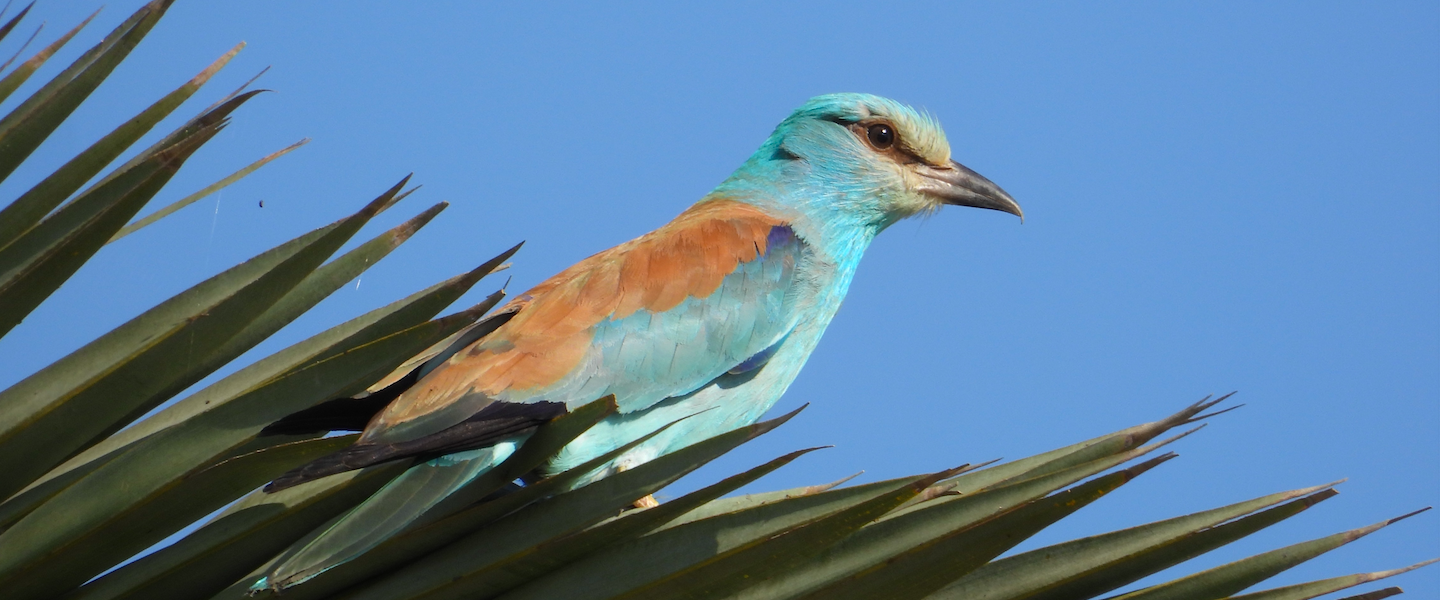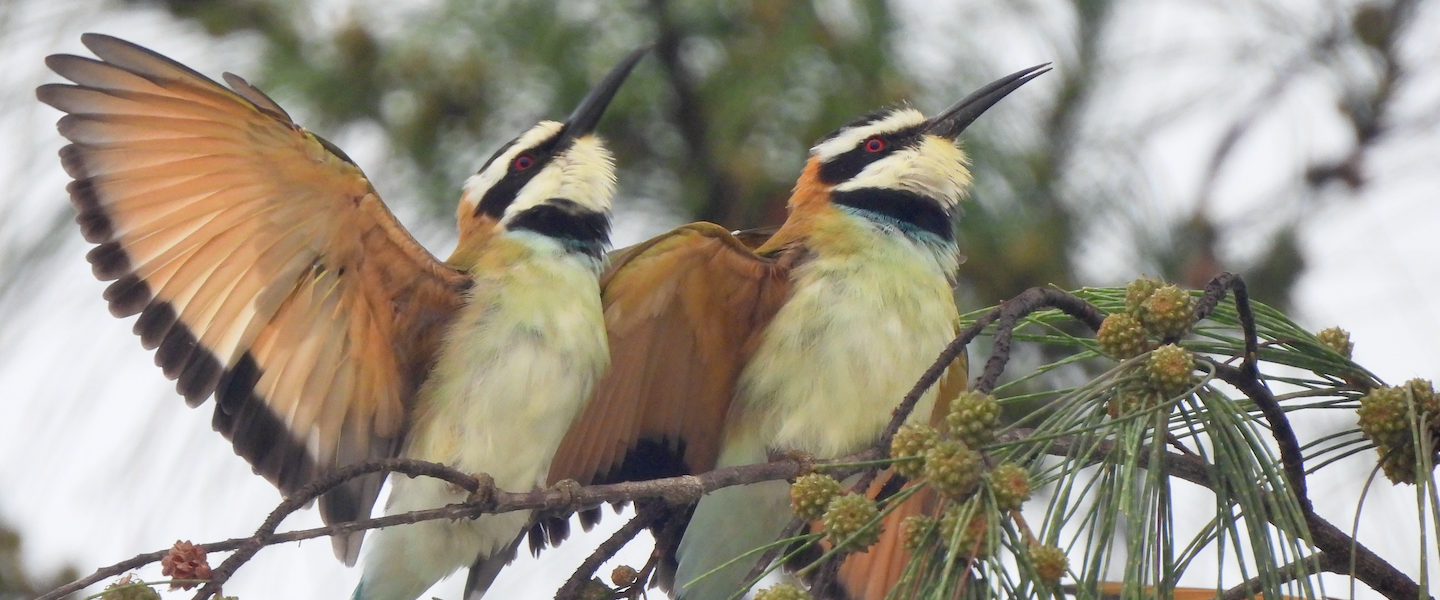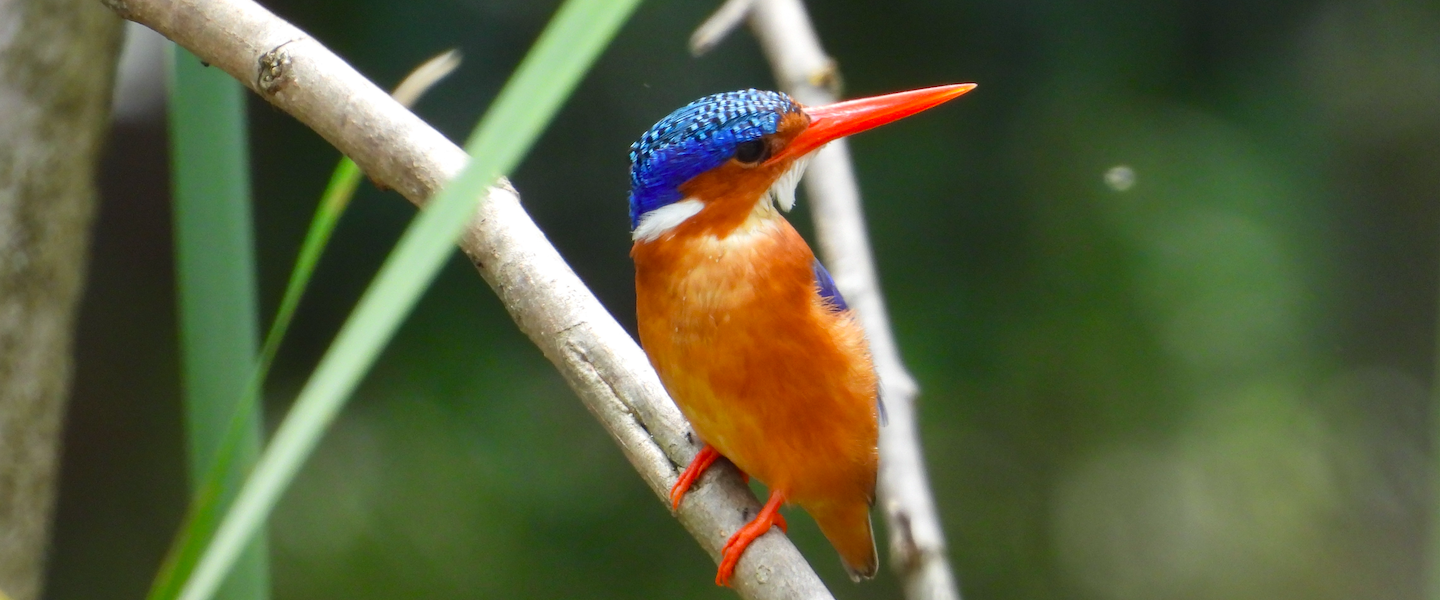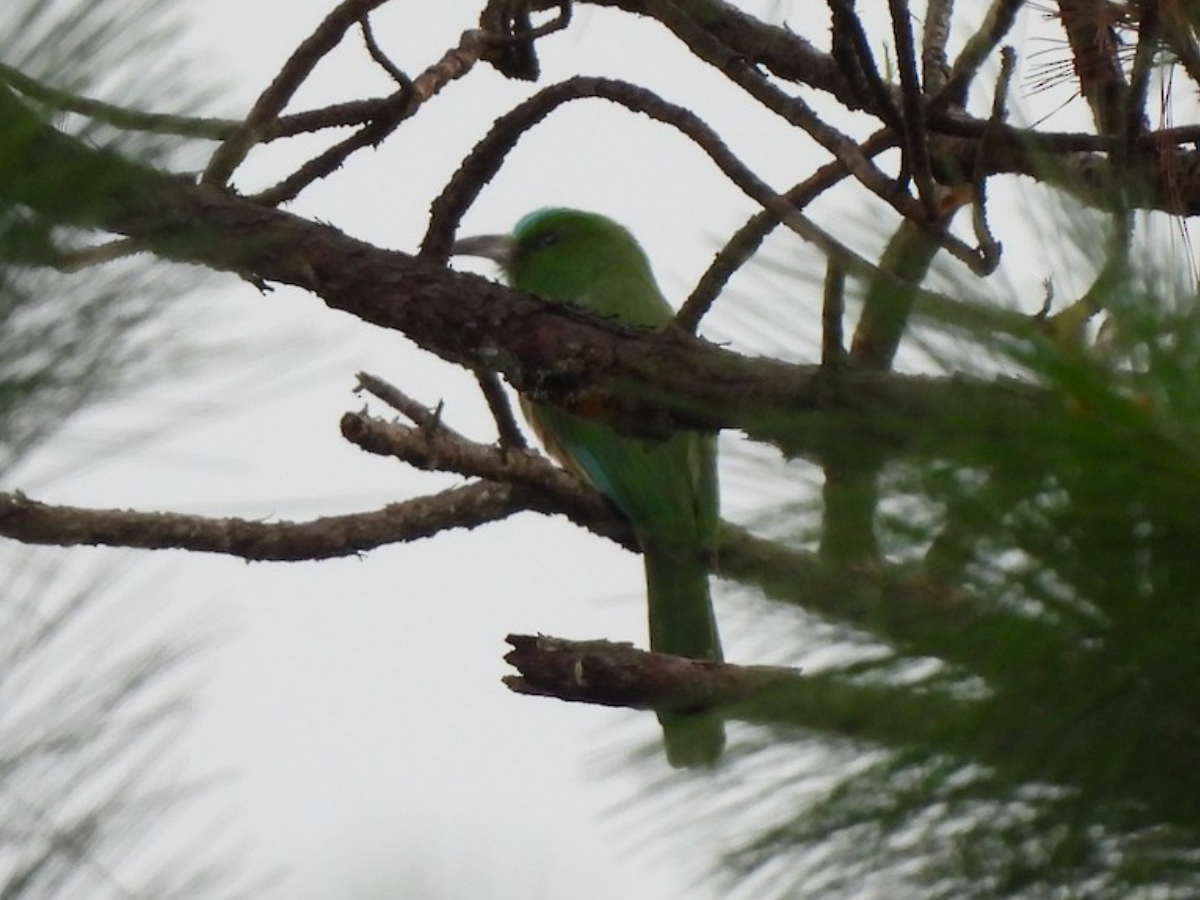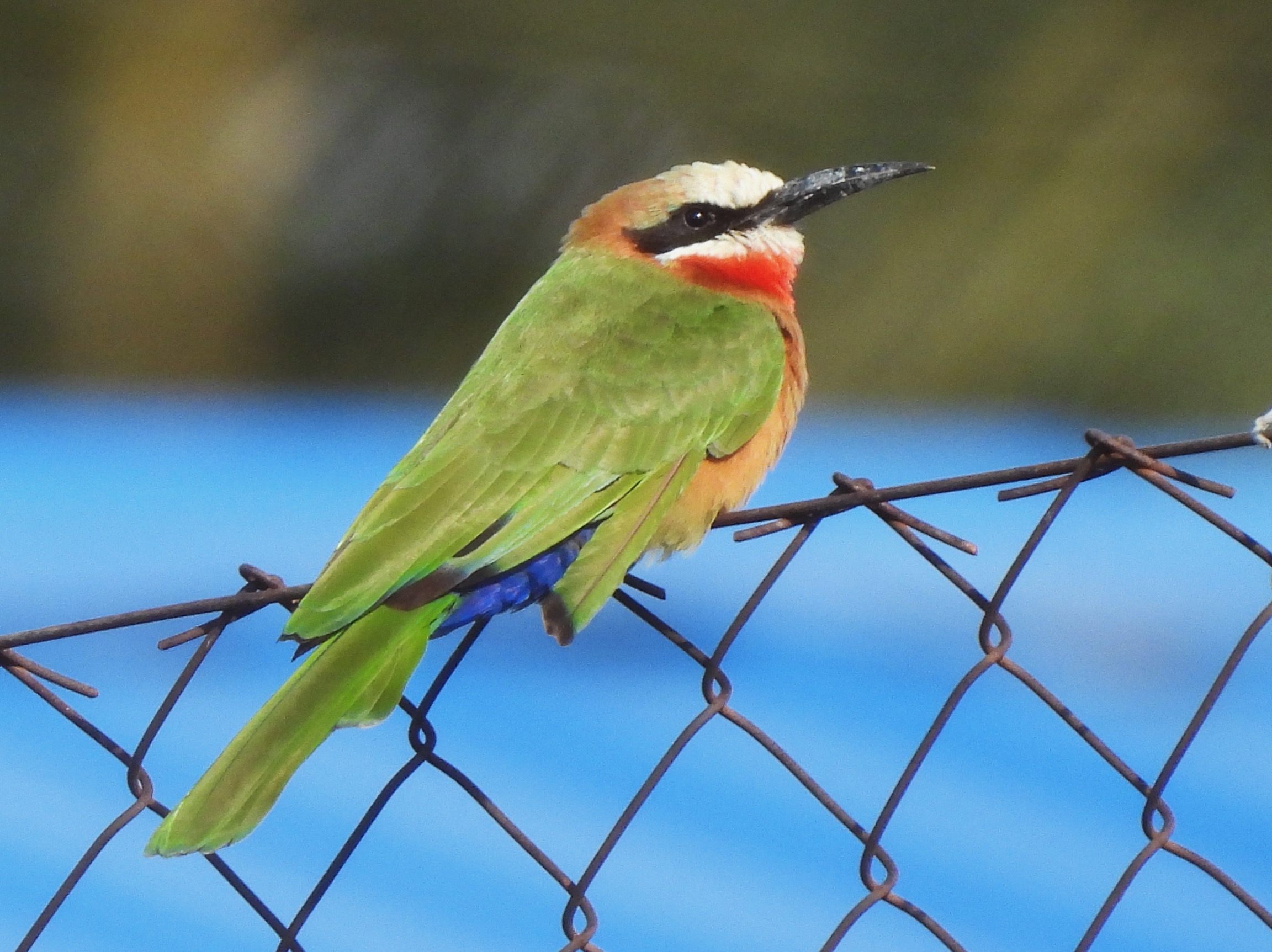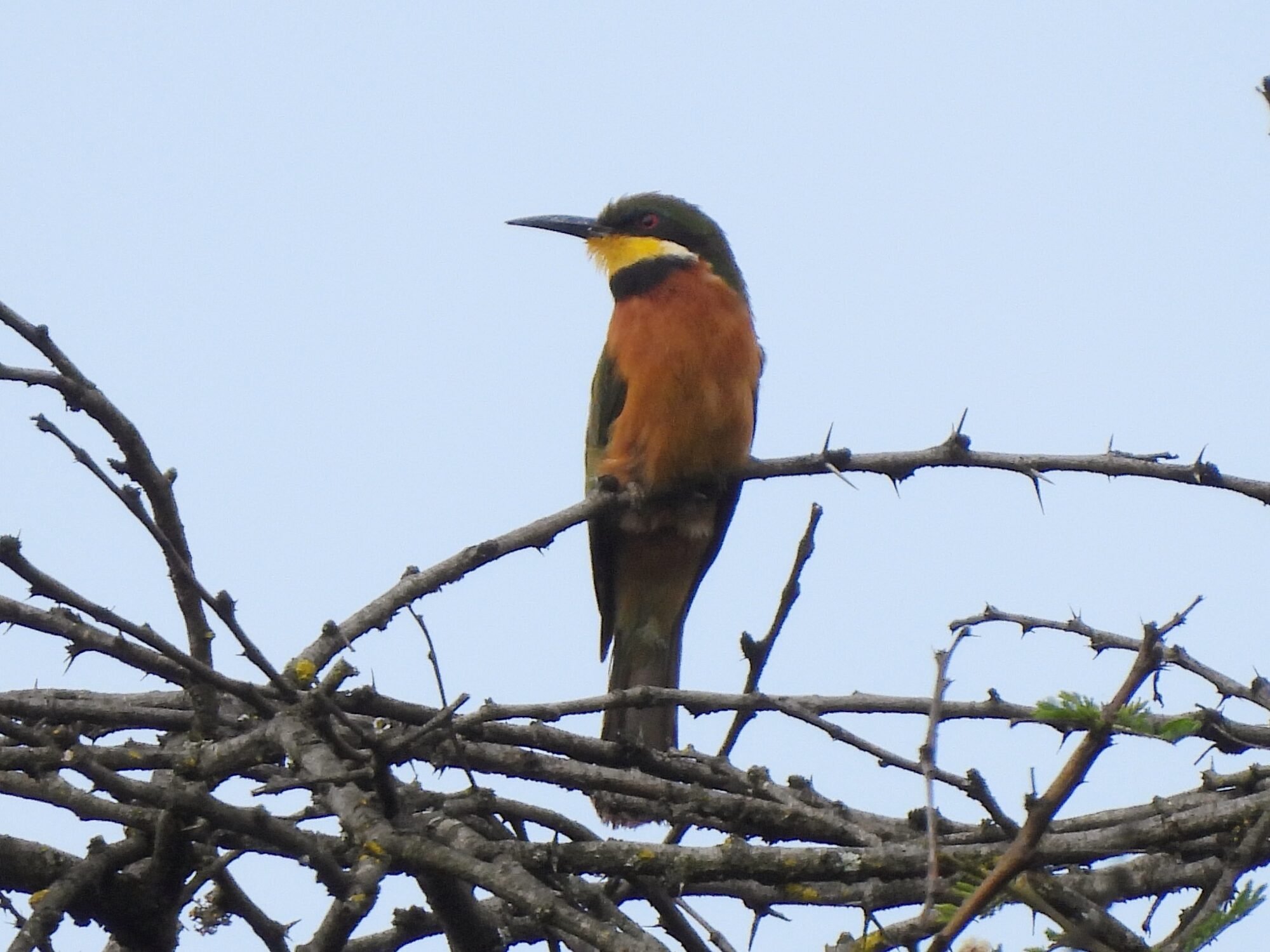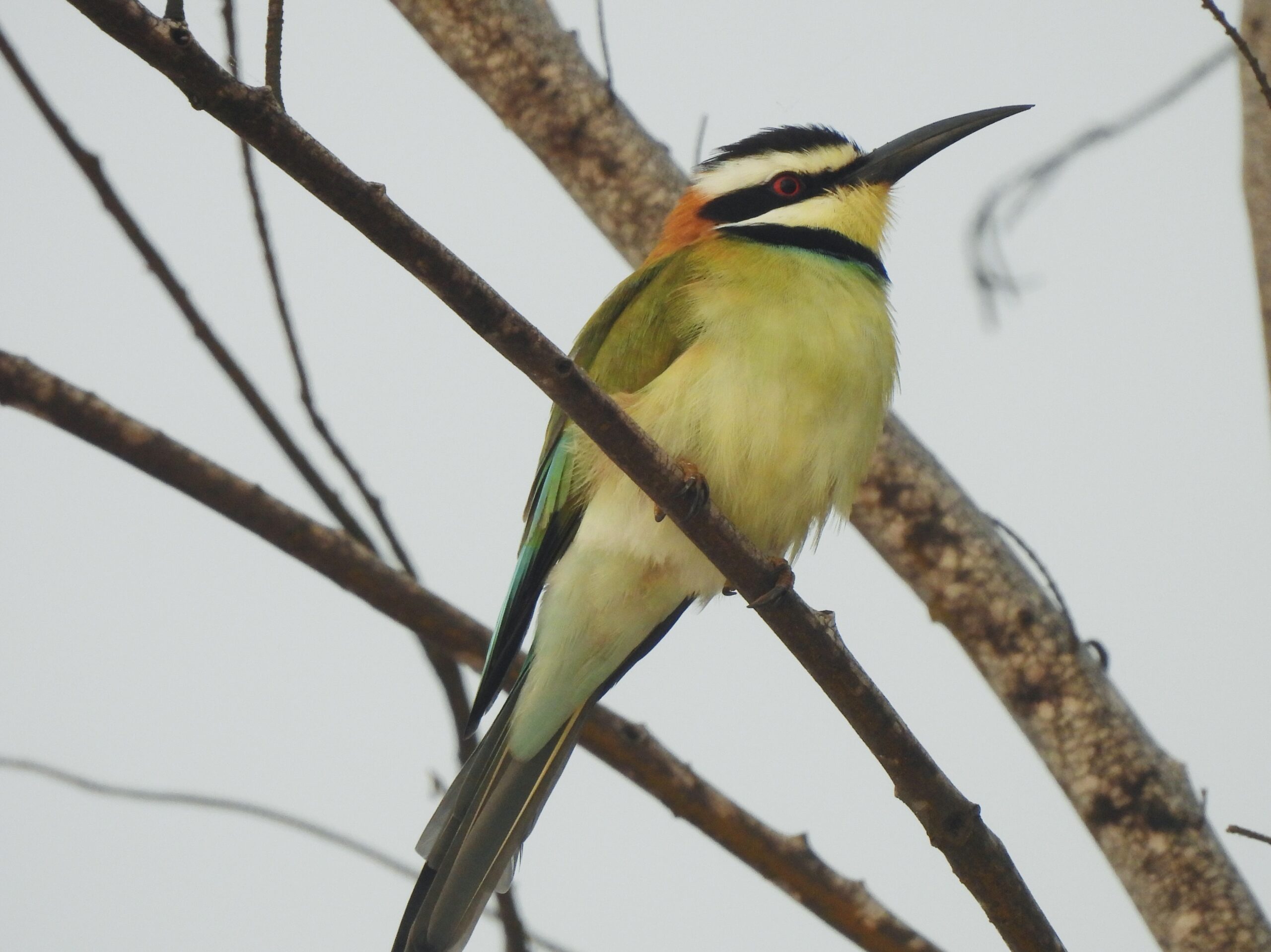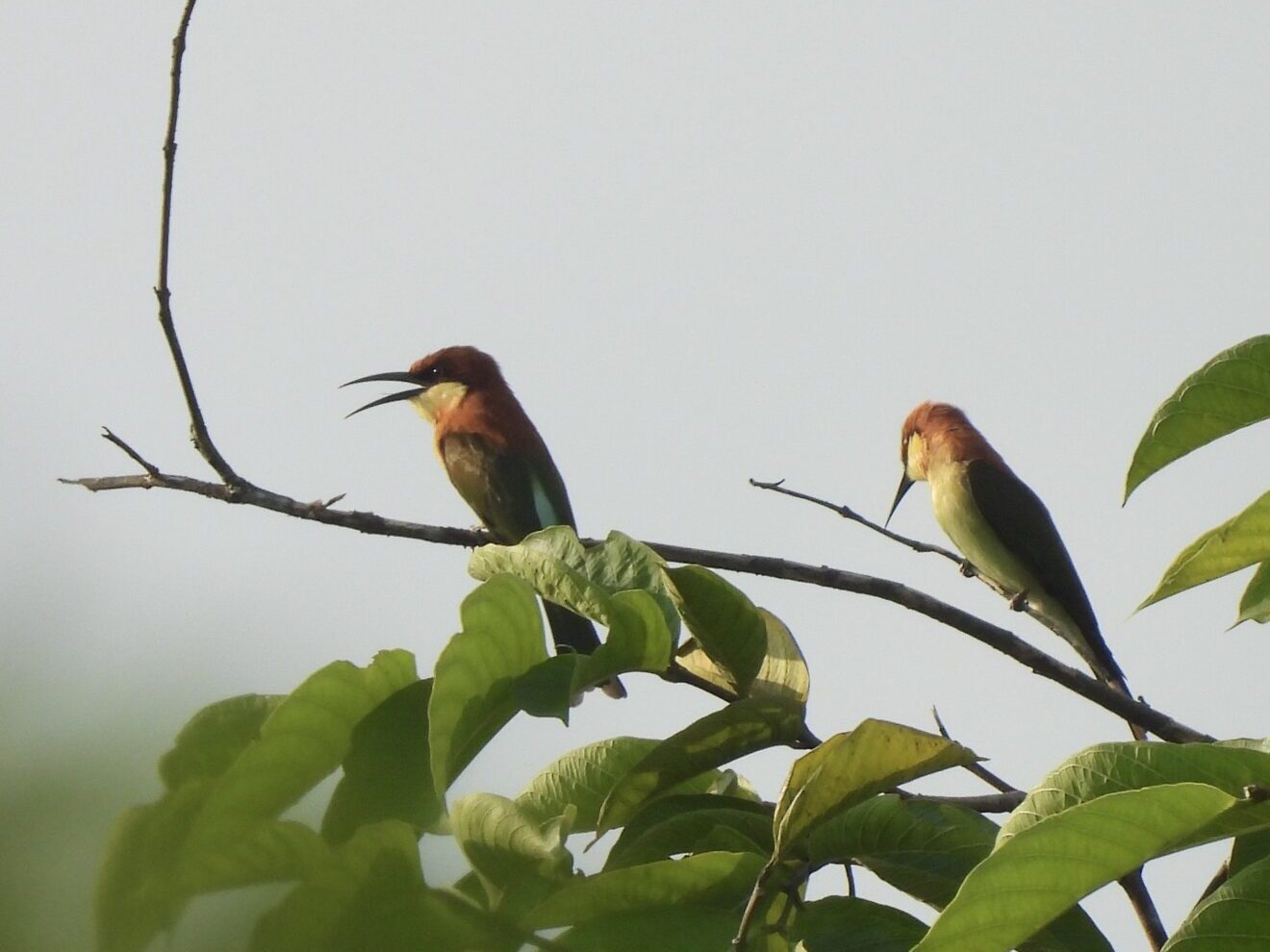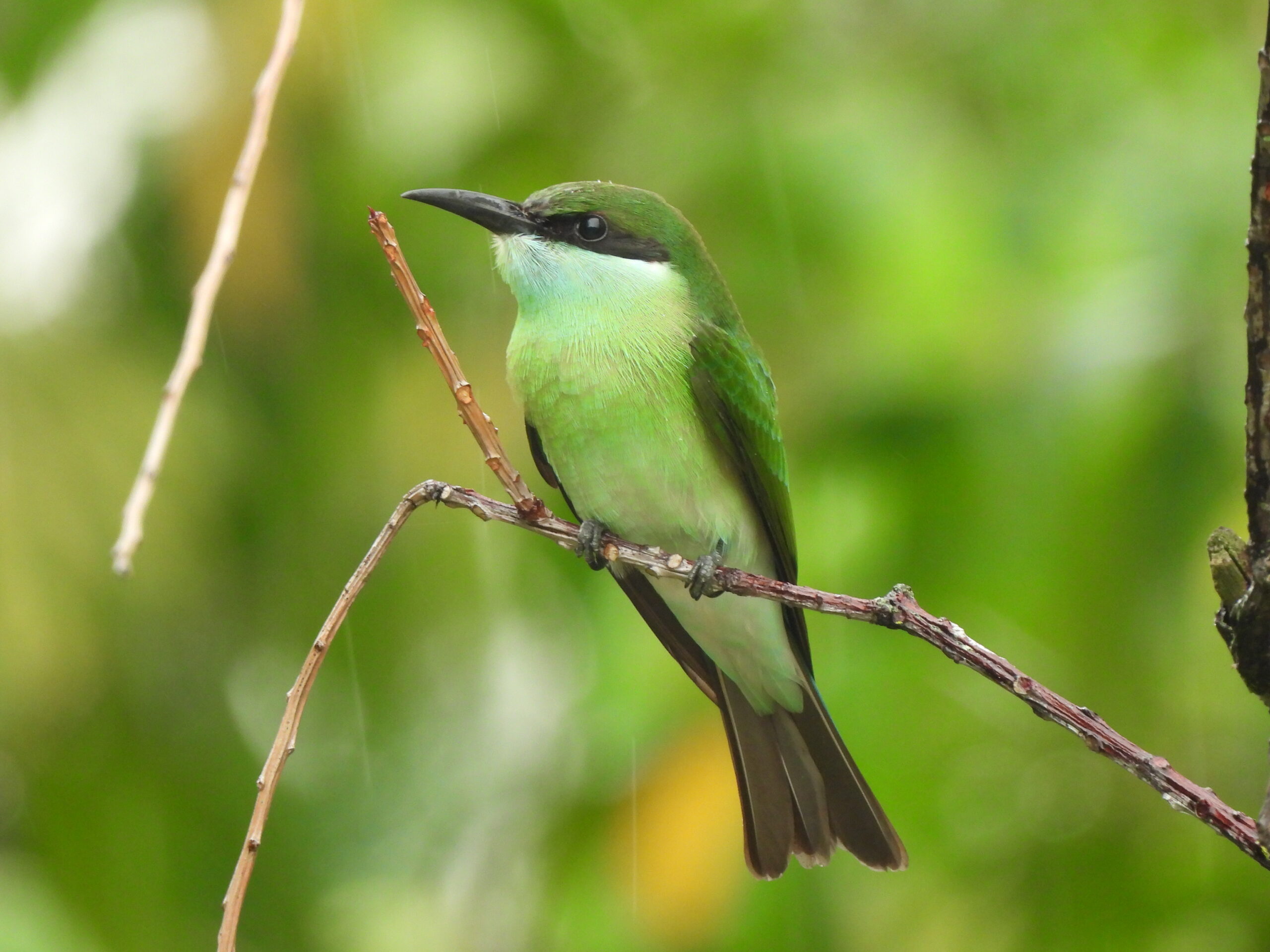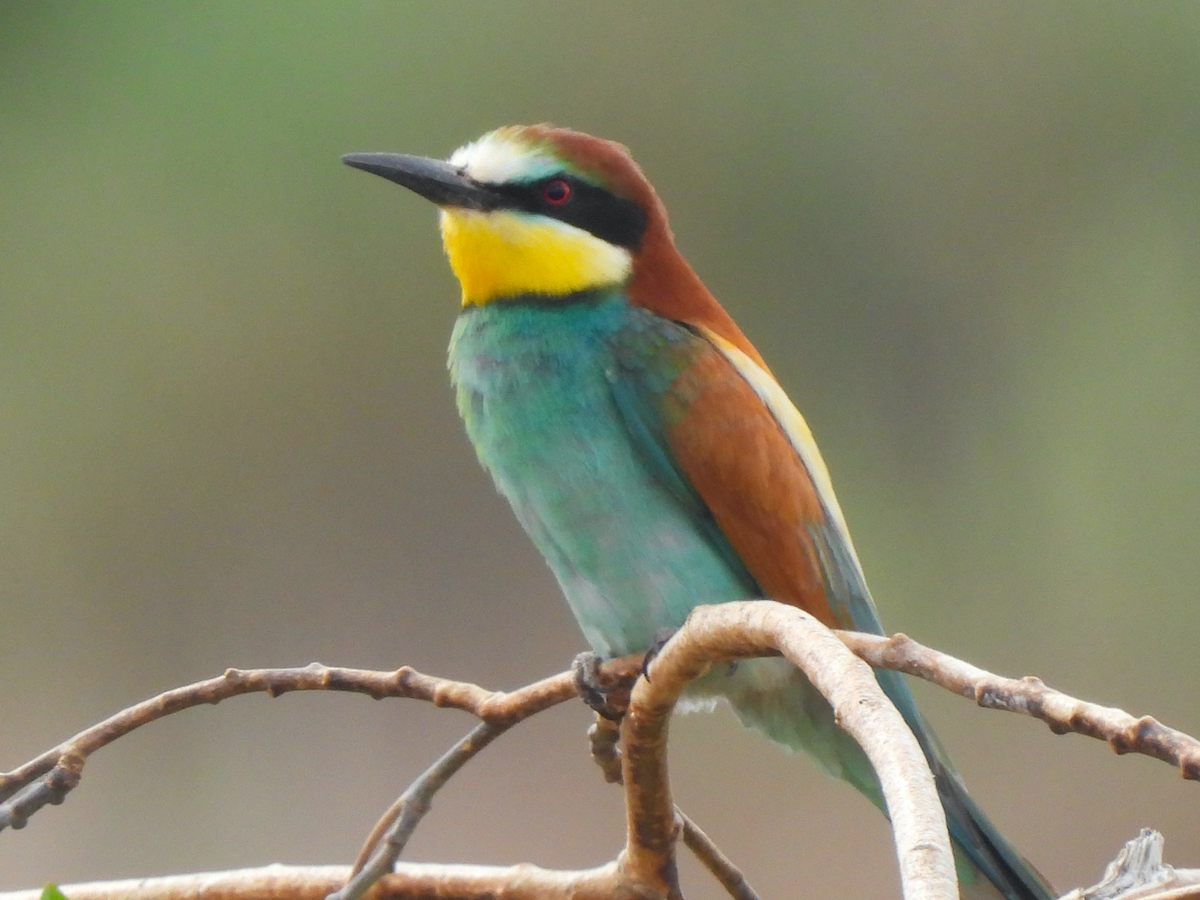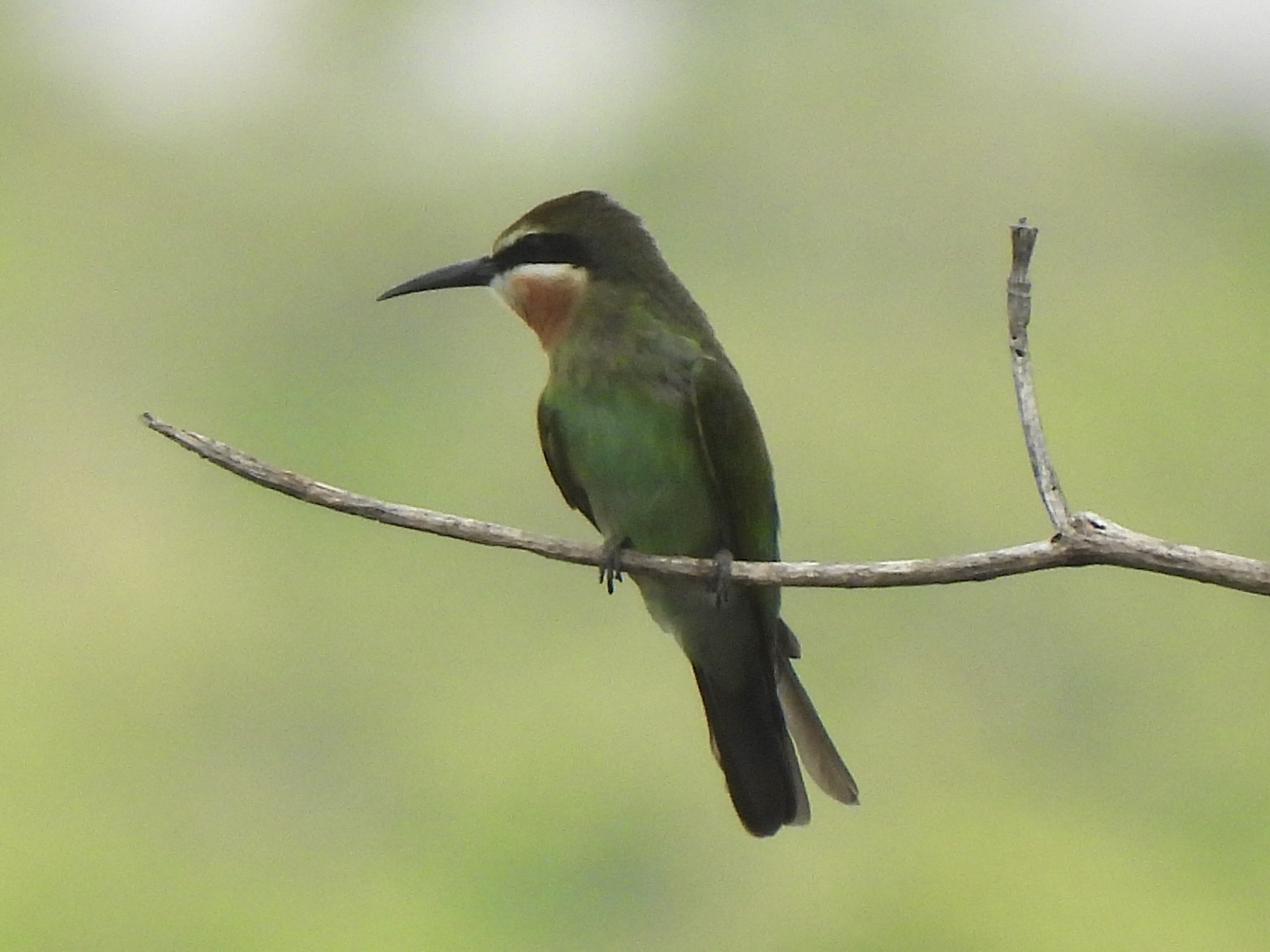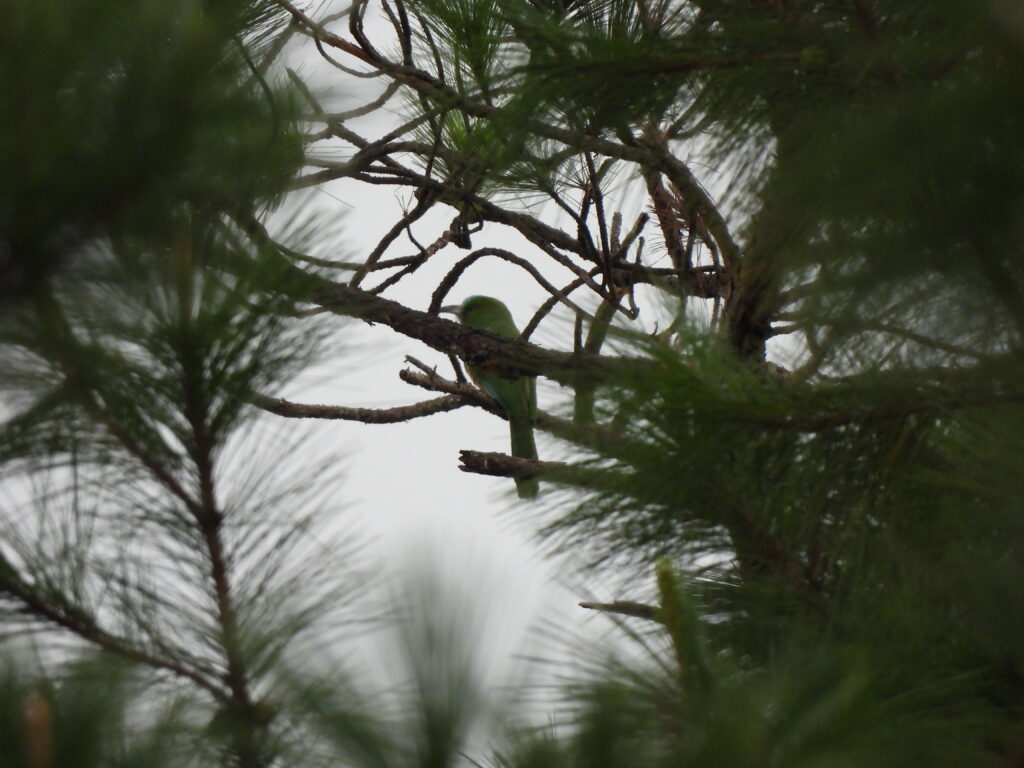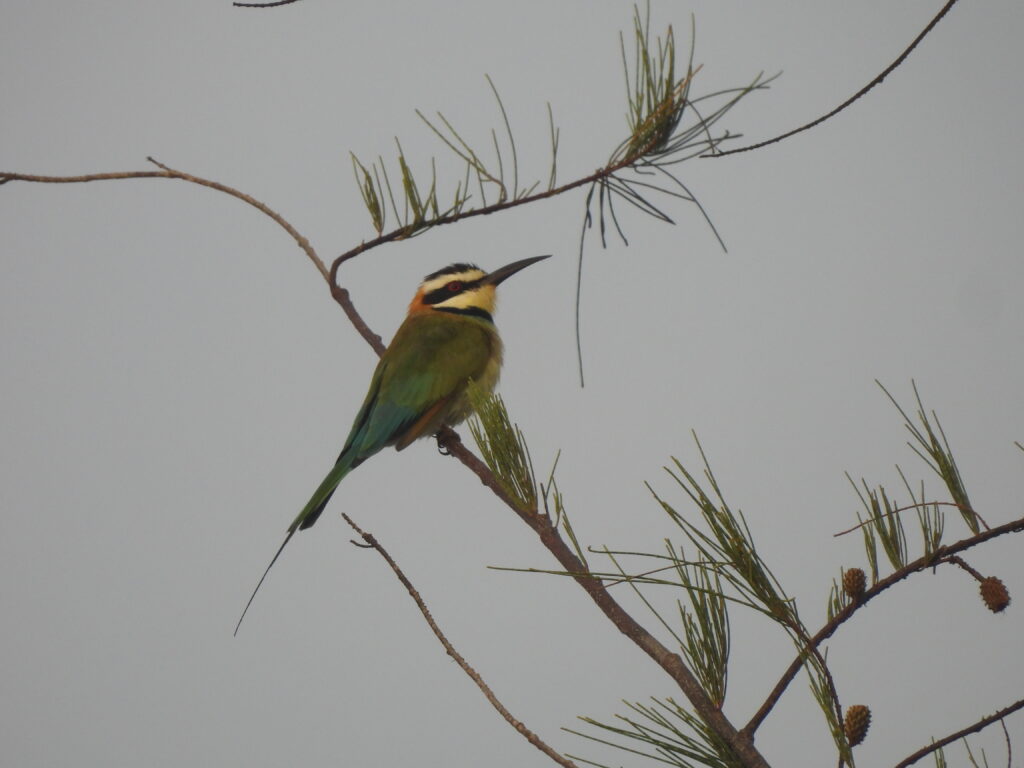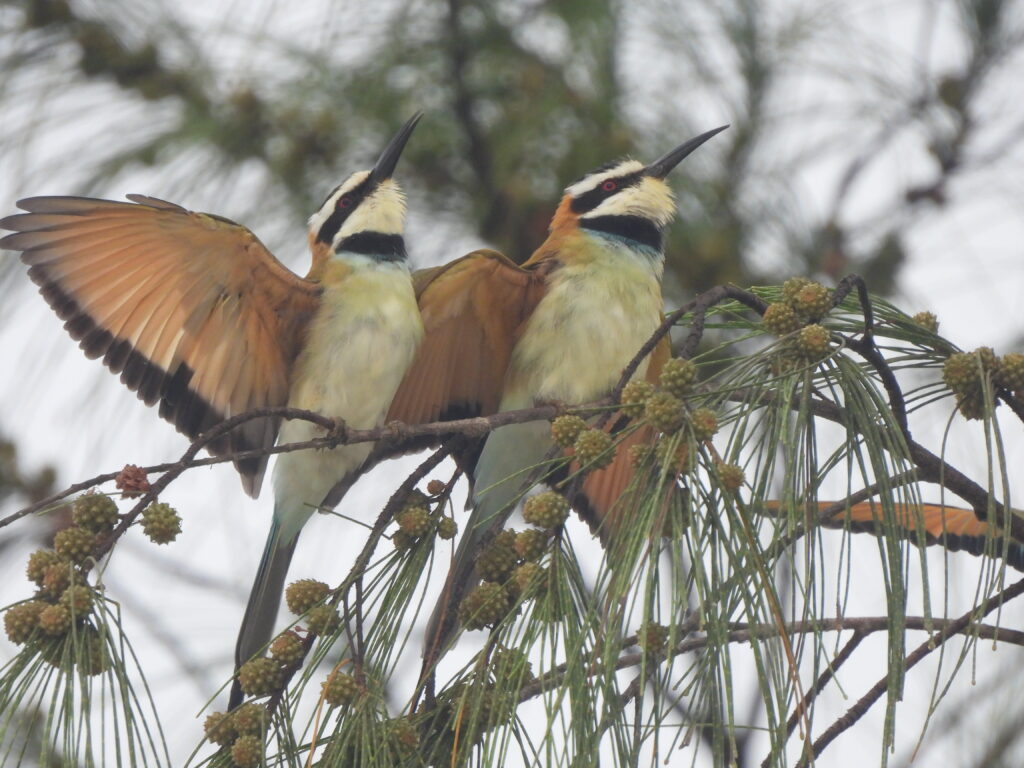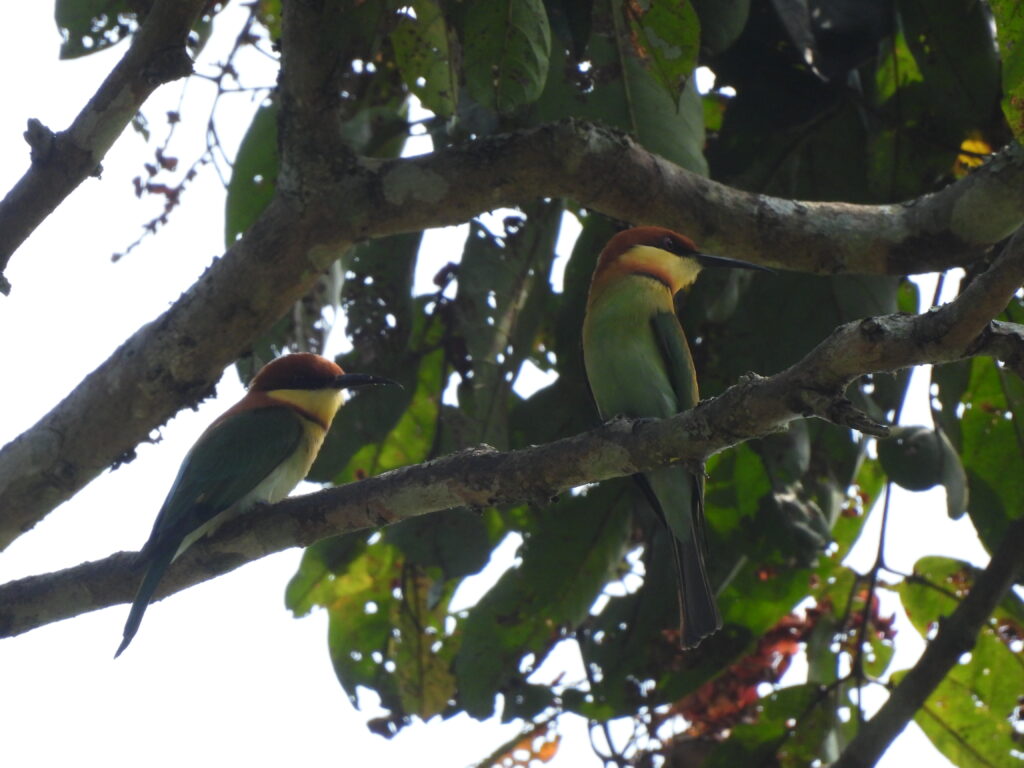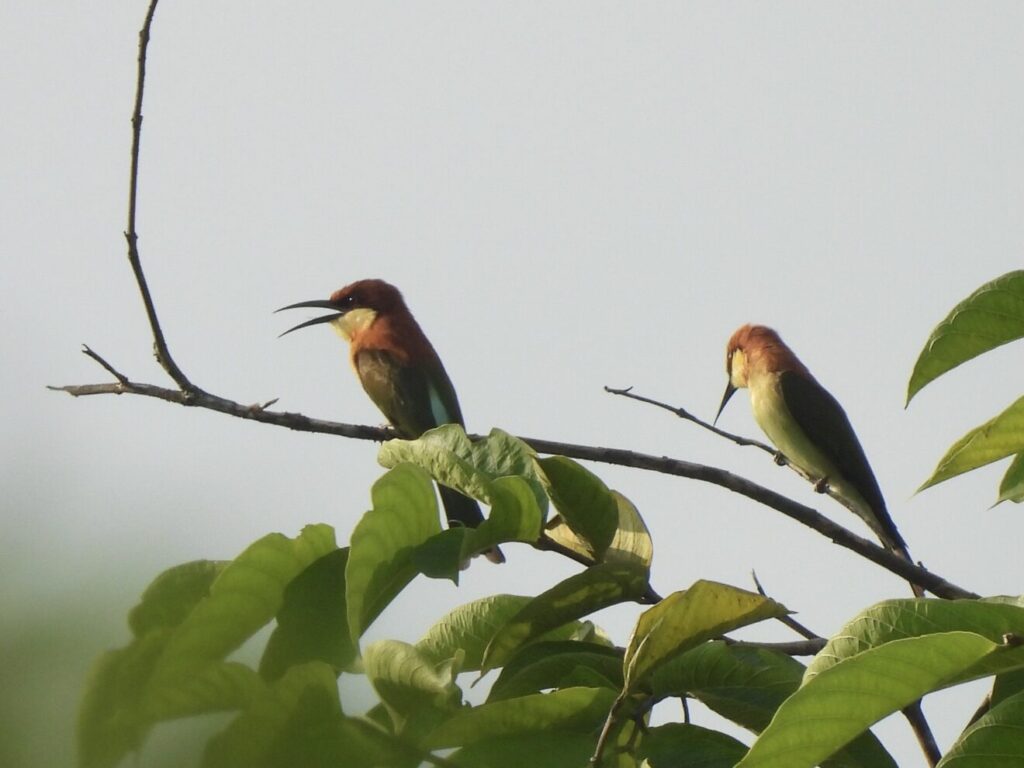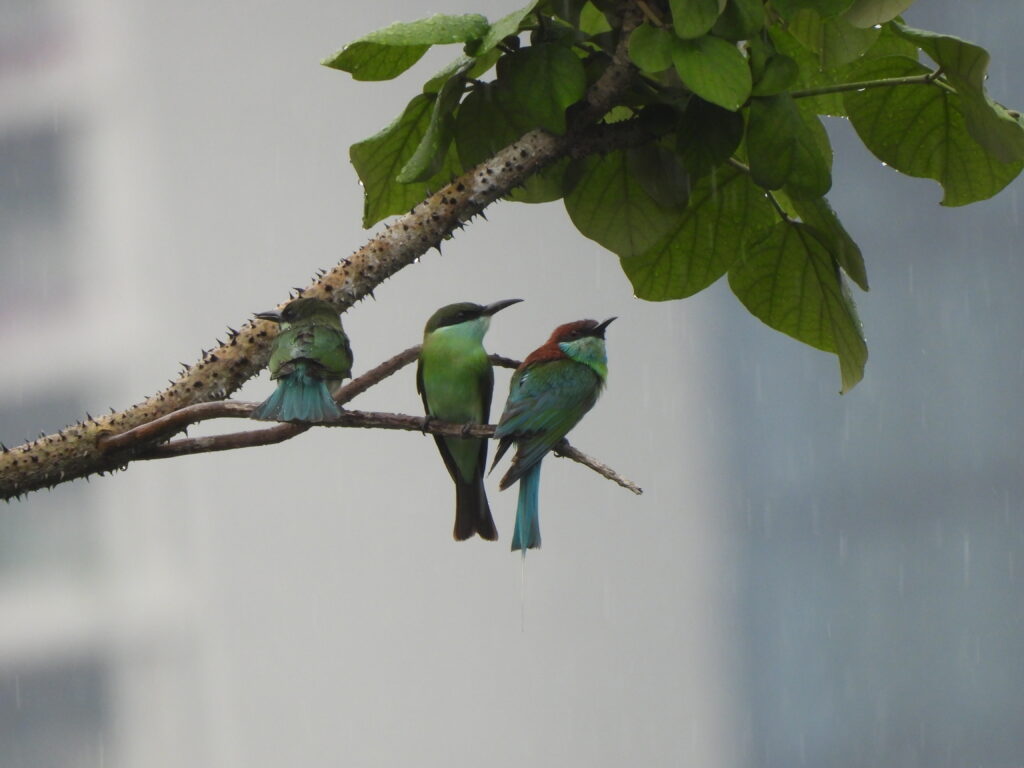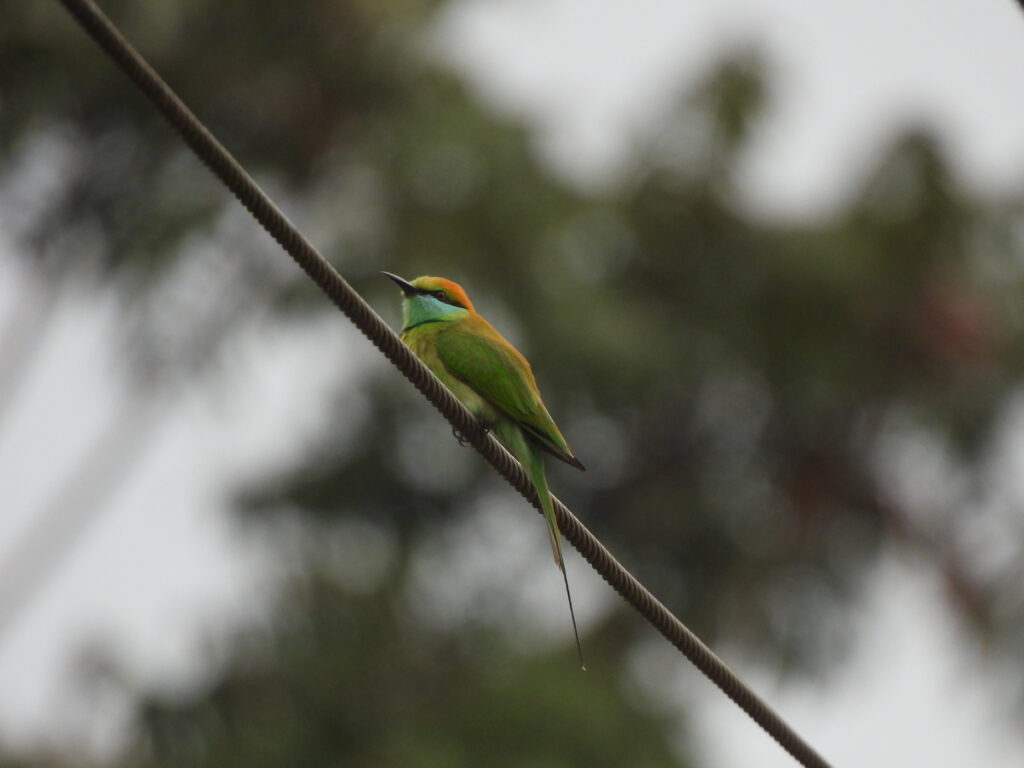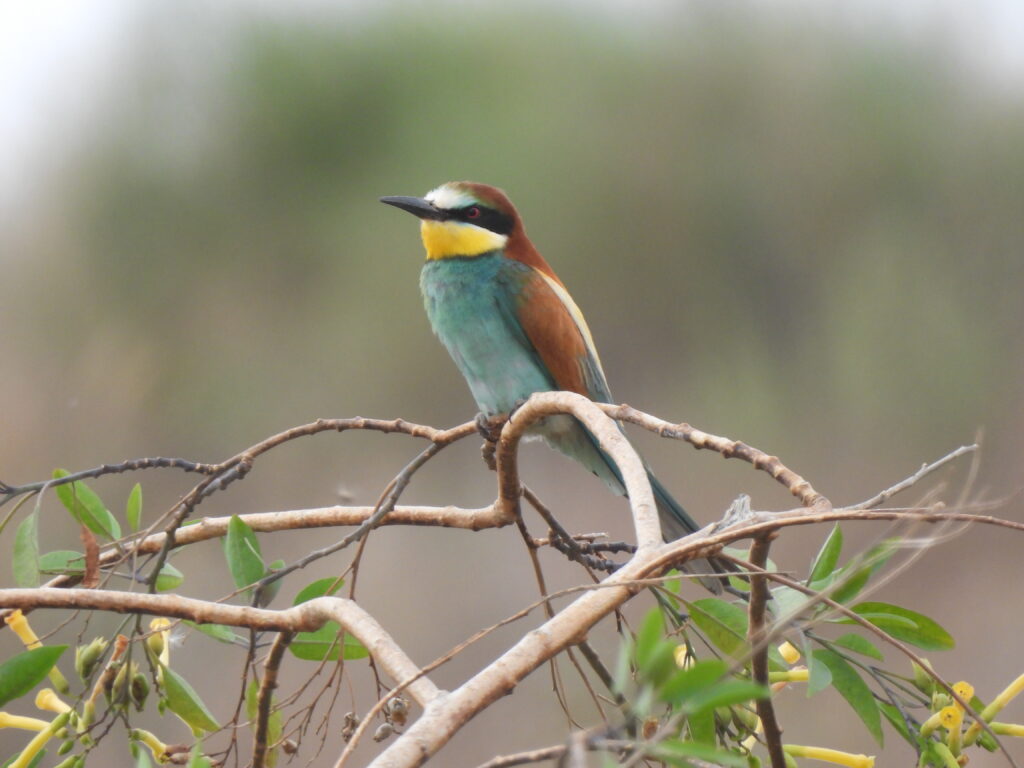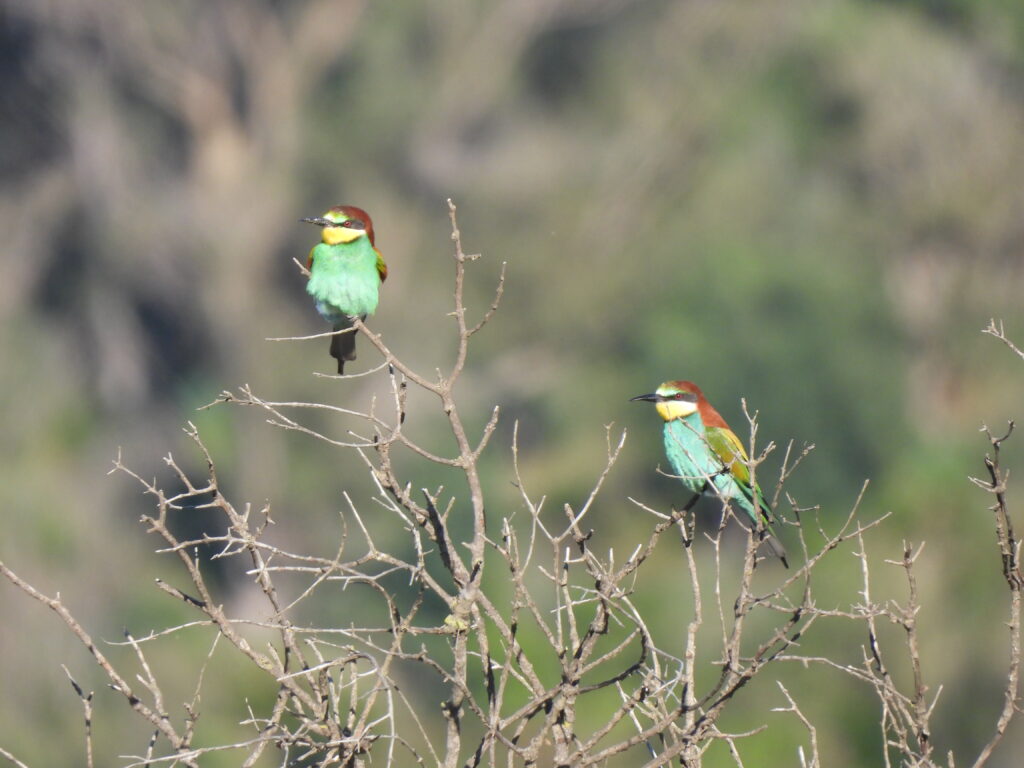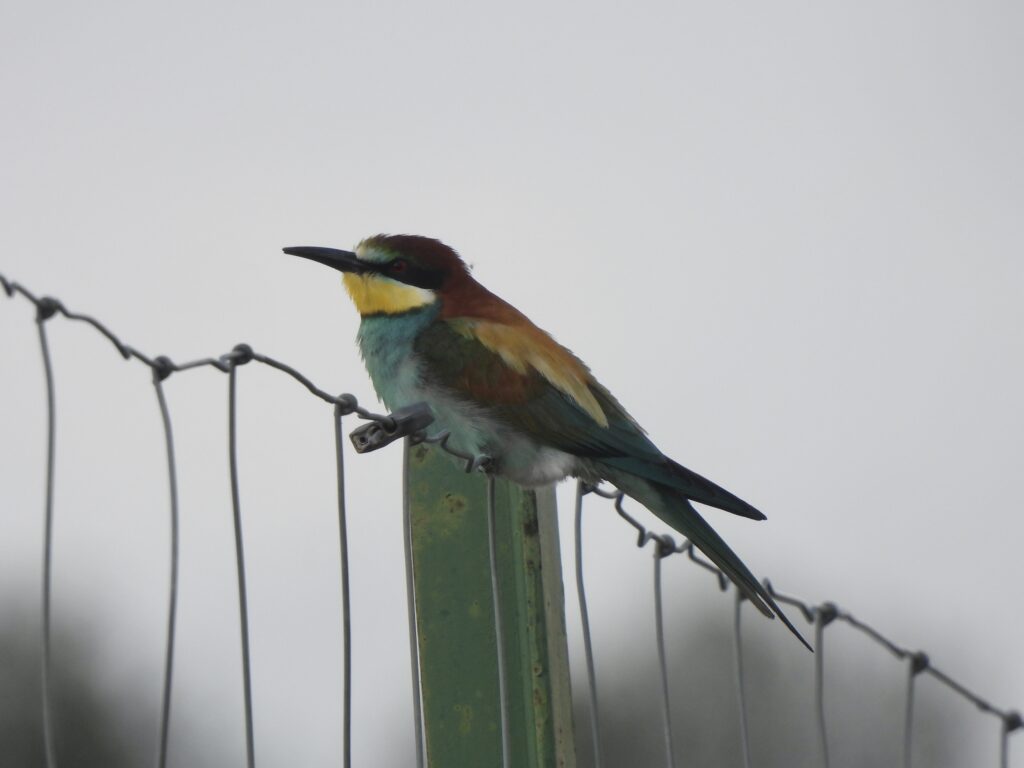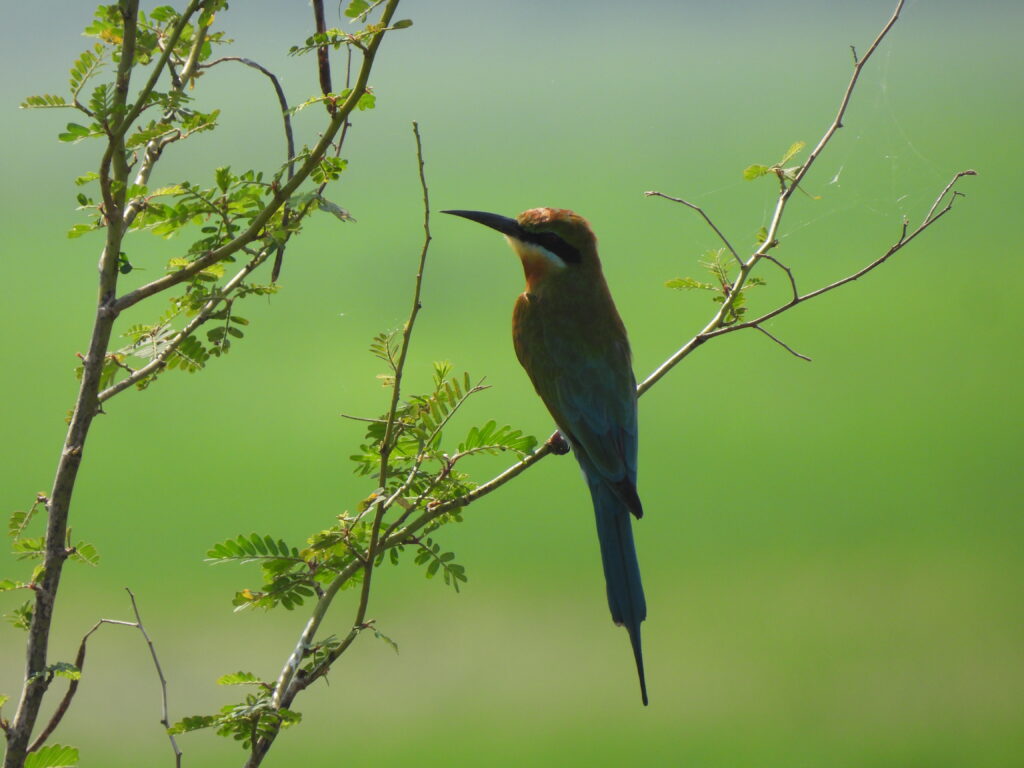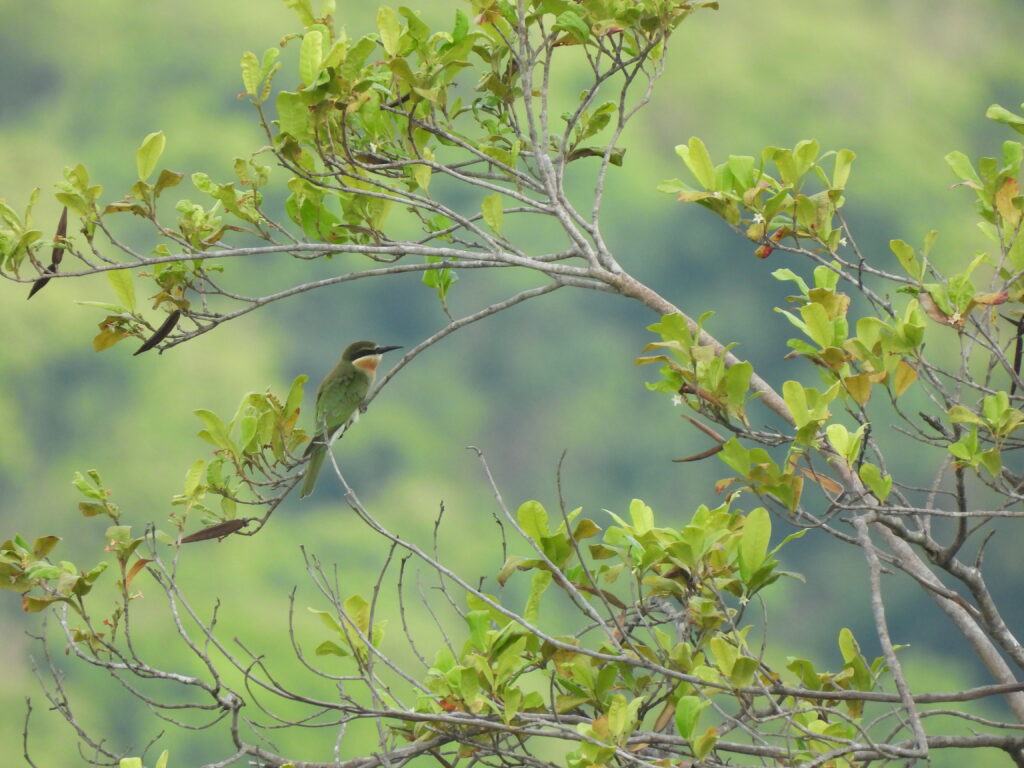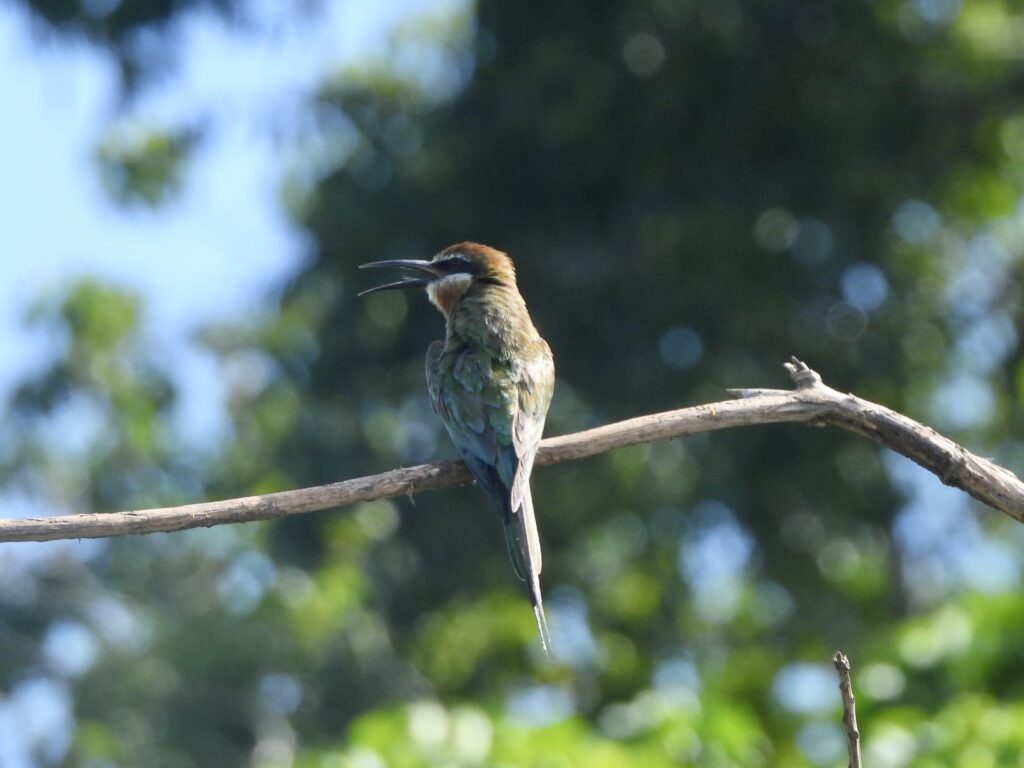The bee-eaters (family Meropidae) are a family of birds belonging to the order Coraciiformes, distributed across the Old World. These birds are especially common in open habitats such as savannas, grasslands, and riverbanks, where they can often be seen perched on exposed branches or wires. Acrobatic flights, a diet consisting mainly of bees, wasps, and other flying insects and a vibrant plumage with bright colors are the main features of this family.
The family comprises 31 species in 3 genera. Basal genera Nyctiornis (2 species) and Meropogon (1 species) comprise large, solitary birds resident to midland and foothill forest clearings of the Indomalayan. Genus Merops (27 species) features smaller, mainly gregarious birds nesting in colonies, with most of its species distributed across Africa (19 of which endemic to the Afrotropical) and Asia (5 of which endemic to the Indomalayan), in addition to one species reaching Australia and a migratory species breeding in Europe.
Blue-bearded bee-eater
Nyctyornis athertoni
Distributed along midland open forests from the Indian Subcontinent to Indochina. Large, solitary and rather inconspicuous. I have seen this charismatic species in well preserved woodlands of Da Lat plateau in Vietnam and in south India.
White-fronted bee-eater
Merops bullockoides
Found in woodland usually close to river banks in Subsaharan Africa. Their large colonies feature some of the most complex social structures among birds. I have encountered this species in gardens of Naivasha city.
Cinnamon-breasted bee-eater
Merops oreobates
Found in forests and gardens of middle and high elevations across the Albertine Rift and the ranges and plateaus around the Rift Valley in east Africa. I have encountered this species in forested areas within Nairobi city.
White-throated bee-eater
Merops albicollis
Found in Subsaharan Africa, with a breeding range along semi-desert areas in the Sahel and south Arabia, migrating south to Equatorial African forests over winter. I have seen this species in the coastal vegetation of Watamu in coastal Kenya.
Chestnut-headed bee-eater
Merops leschenaulti
Distributed along forest clearings in south India east to Malay and Indochina, including Java and the Andaman Islands. Its partial migratory movements avoid the monsoons. I have seen this species in Cat Tien in Vietnam and the foothills of south India.
Blue-throated bee-eater
Merops viridis
Found year-round in Indochina south to Sumatra and Borneo, with a summer range north to Shanghai and Wuhan regions in China. I have observed this species in botanical gardens of Singapore and in open rainforest in Borneo.
Asian green bee-eater
Merops orientalis
Found in grasslands and open woodlands across the Indian subcontinent and Indochina, west to the Persian Gulf. Small and often abundant in farmland and peri-urban areas. I have seen this species in the backwaters of India, often at poles and cables around houses..
European bee-eater
Merops apiaster
Found in open dry areas, breeding in sandbanks along the Mediterranean and migrating towards southern Africa in winter. It is the only regularly found species in Europe. This species breeds in Alicante and is a numerous summer visitor; I have also seen it wintering in Kenya.
Blue-tailed bee-eater
Merops philippinus
Breeding in sandbanks of India east to Indochina, they migrate to all sorts of open habitats across southeast Asia east to the Philippines and Papua in winter. I have seen this species in grasslands and backwaters of south India, often close to human settlements.
Olive bee-eater
Merops superciliosus
Distributed along open areas of Madagascar, Comoros and east Africa, with an isolated population between Angola and Namibia. Partially migratory, it leaves southern Africa during the rainy season. I have seen flocks of this species in Lake Ravelobe in north Madagascar.

